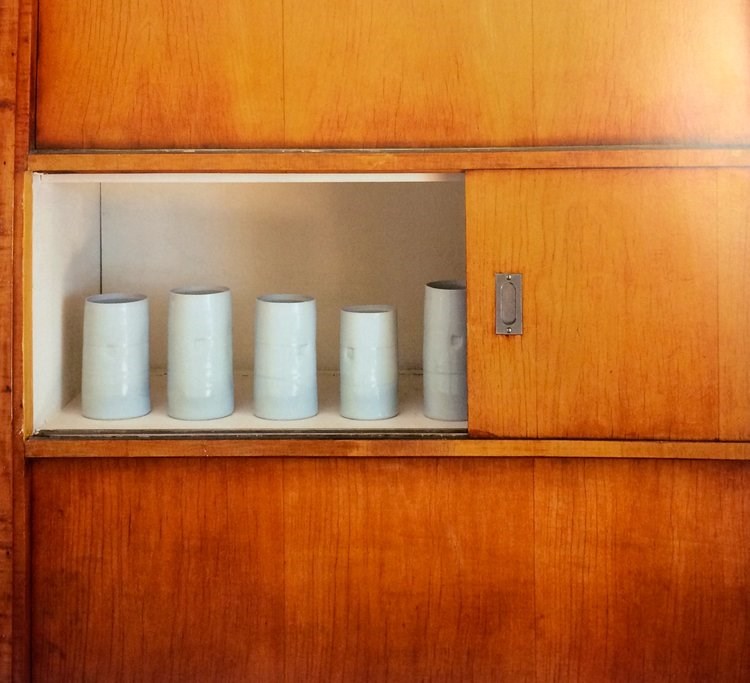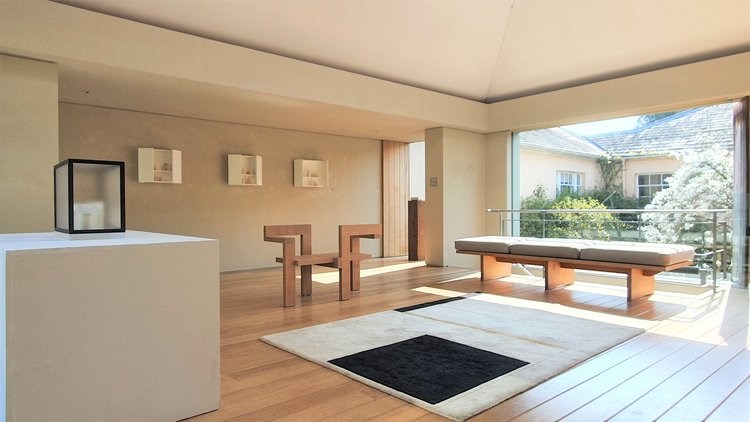A Gallery of One's Own
24 March 2022
ShareHow and why collectors live with art installations at home.
Matthew Turner
Matthew Turner is a writer, editor, and Senior Lecturer at Chelsea College of Arts. His work has appeared in Frieze, Art Review, gorse and others.

“The House of the Farmer”, a site-specific installation conceived by British artist Mike Nelson and curated by Didi Bozzini, at the Palazzo dell’Agricoltore until June 2022.
Image courtesy of Palazzo dell’Agricoltore, credit: Lucio Rossi.
It was dark in the basement of the German castle. Some dusty light came in through the floorboards and in front of me there was an open bank vault door. The place was empty and I felt I shouldn't be there even though I had been sent by my boss. I looked around to check nobody was around and I went in.
Inside I could just make out the faint glint of metallic objects and a smell of wet earth surrounded me. Newly graduated from university I was working as an architect’s assistant, visiting the home of a collector to measure some of its outbuildings so more of the estate could be turned into gallery spaces. The client was a hedge fund manager with a vast private collection and wanted the extra room to house complex installations by Anselm Kiefer and Anthony Gormley. It was going to be a tricky project with both artists requiring reinforced floors to carry tonnes of sculpture and walls to be absolutely straight within fractions of a millimetre. However, that day I had mostly been distracted leafing through paintings worth millions that were just stacked against the walls.
Edmund de Waal, Cupboard Cargo, 1999 installation at High Cross House, Devon.
Image courtesy of Edmund de Waal, credit: Sara Morris.
Within the vault, after a slightly panicked search, I found a switch and the strip lights buzzed on one by one. I was surrounded by glass vials containing strange, autumnal pigments, clerical clothing spread out like pieces of meat and surgical instruments. It gave me the feeling of fear and intrigue I remembered from hearing ghost stories as a child. The next day I found the client’s groundskeeper and he told me it was an art installation by the Austrian artist Hermann Nitsch. He called it the nightmare room and I was relieved I hadn't stumbled on something else.
The room stayed with me, it was like finding a new band I didn't want anyone else to know about, and this highly personal feeling is not uncommon when people talk about their encounters with installation art. The typical boundary between viewer and object is broken and leads to an immediacy and intimacy that is rare in wall-based artworks. Rather than looking at an object from a distance, you are living within the work. Instead of moving from one individual sculpture or painting to the next, you are free to explore an environment that is a complete unified experience.
A permanent display of Edmund de Waal’s work is installed in the Artists’ house at the New Art Centre, Wiltshire. The Artists’ House opened in 2001 and was designed by the architect Stephen Marshall. New Art Centre is open daily 11am – 4pm.
Image courtesy of New Art Centre, Wiltshire.
I searched for more installations in domestic settings that combined art and architecture. The Californian artist James Turrell has been extending American homes with bunker-like spaces for his meditative sensory installations. In 2008 he created a light coloured pool for a private residence in Greenwich, Connecticut—an artwork the owners can swim through as well as look at. The John Lautner–designed Sheats-Goldstein house, which features in The Big Lebowski, now includes a Skyspace that compresses the sky into a picture and transforms picturesque sunsets into psychedelic dreamscapes. And in Las Vegas the CEO of MGM commissioned the artist to design him a pyramidal installation, which looks like the modern equivalent of a Neolithic monument. Turrell has been so prolific in people’s homes that some get forgotten. A resident in Malibu found one of his installations in her guest house, hidden behind children’s toys, surfboards and exercise equipment.
These spaces are largely detached from the complexities of the domestic, more standalone structures than being integrated into the home. On a less invasive scale, this is where artist and writer Edmund de Waal composes his cargo works, subtle groupings of ceramic vessels that are placed to absorb existing interiors into an all encompassing artwork. At the modernist High Cross House in Devon his pots are half hidden in cupboards, obscured behind furniture or placed high up where people don't usually look. His objects are where you might expect them, but don't look quite like what you would expect. They have a ghostly presence, projecting a feeling of unease, which then throws disquiet across the rest of the space—even those areas the artist hasn't touched. De Waal cleverly negotiates the boundary between installation and interior design to explore feelings of the homely and unhomely, a distinction which is often a problem when artists bring their installations into the home.
Edmund de Waal, Lidded vessel, c. 2005, Tall Lidded Jar, 2006, Tall Lidded Jar, 2006. A permanent display of Edmund de Waal’s work is installed in the Artists’ house at the New Art Centre, Wiltshire. The Artists’ House opened in 2001 and was designed by the architect Stephen Marshall. New Art Centre is open daily 11am – 4pm.
Image courtesy of New Art Centre, Wiltshire.

“The House of the Farmer”, a site-specific installation conceived by British artist Mike Nelson and curated by Didi Bozzini, at the Palazzo dell’Agricoltore until June 2022.
Image courtesy of Palazzo dell’Agricoltore, credit: Lucio Rossi.
Their work is site specific, made for a particular location or environment. This could be a white cube gallery space, where Do Ho Suh’s minimal and colourful passageways work so well, without the distractions that come with the interiors of older and more elaborately decorated galleries. Or it could mean they work with historical settings, where you would not expect to see artwork. Mike Nelson, known for winning the Turner Prize and his installation Coral Reef, currently has an expansive work of gnarled tree fragments in the Palazzo dell’Agricoltore, the ex-headquarters of an agricultural consortium in Parma. The nuances of context and how this contributes to meaning, makes it difficult to just place these works into different settings—it disrupts the intentions of the artist. Instead, most are broken down and sold in smaller parts, reducing their impact as a total environment. Or the artists reject selling larger works, relying on the sale of smaller editions, books and drawings to fund their more substantial projects.
A few years ago I visited Sammung Hoffmann in Berlin. The collection is housed over two floors in a private apartment within a former factory and the owner, Erika Hoffmann, welcomes people into her home every Saturday. I was there to see Joëlle Tuerlinckx’s Atlas of wall 81 Extraits, a 1:1 mapping of a space for Manifesta 10 in Saint Petersburg transplanted onto the walls of the collector’s home. The paper, or map, had been hung from floor to ceiling in rectangles and squares of different sizes. There were cut marks where sockets had been traced and rough lines of fluorescent orange paint. It matched the fabric on the dining room chairs and the flowers in vases placed around the room. Associations which drew it into a lexicon of complementary colours, wallpaper and fabric selections, rather than standing out as an artwork.

Joëlle Tuerlinckx, "Atlas of wall 81 extraits ‘Manifesta’ #10, Musée Hermitage, Saint Petersburg’", 2014-2017, paper, pencil, casein acrylic, nails, magnets; Warren Platner, Table and chairs, designed 1964/66; Foto studioschuurman.
Copyright: Sammlung Hoffmann, Berlin.

